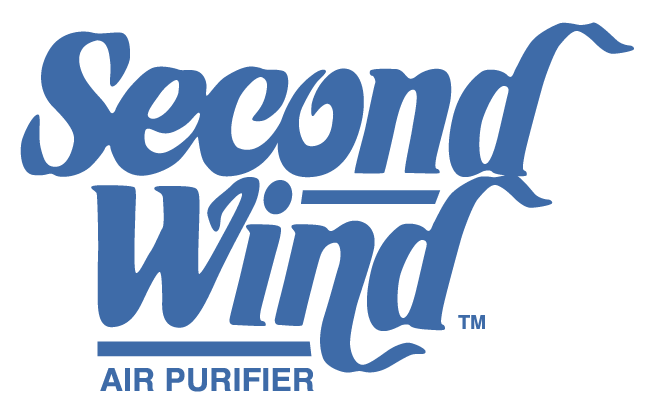Click To View Definition
API
American Petrolium Institute. The American Petroleum Institute (API) is the only national trade association that represents all aspects of America’s oil and natural gas industry. More than 500 corporate members make up the API, from the largest major oil company to the smallest of independents; all segments of the industry that include producers, refiners, suppliers, pipeline operators and marine transporters, as well as service and supply companies that support all segments of the industry.
ASTM
Founded in 1898, stands for the American Society for Testing and Materials. It is an international standards organization that develops and publishes voluntary consensus technical standards for a wide range of materials, products, systems and services.
Barrel
A unit of volume measurement used for petroleum and its products. 1 barrel = 42 U.S. gallons or 35 British gallons. Its abbreviation is Bbl.
B100
Blends of biodiesel and conventional hydrocarbon-based diesel are products most commonly distributed for use in the retail diesel fuel marketplace. Much of the world uses a system known as the "B" factor to state the amount of biodiesel in any fuel mix:
- 100% biodiesel is referred to as B100, while
- 20% biodiesel, 80% petrodiesel is labeled B20
- 5% biodiesel, 95% petrodiesel is labeled B5
- 2% biodiesel, 98% petrodiesel is labeled B2.
Biodiesel
Stuffs such as vegetable oils, recycled cooking oil and animal fats are the ones which are used in the manufacturing of biodiesel. Biodiesel is known as pollutant-free, clean-burning alternative to petroleum diesel. The procedure of making biodiesel is a chemical process which separates glycerin from animal fats or vegetable oil (mostly, oils derived from soy and corn). For this, the process requires the use of methanol or ethanol, and a catalyst such as sodium hydroxide. Once the glycerin gets separated, it leaves behind what is known as methyl ester (chemical name for biodiesel). The byproduct, glycerin, is used in soap and other products. The chemicals and catalyst used in the chemical process can also be recovered and reused. The whole concept behind biodiesel is about reusing, and recycling resources.
Biodiesel is more expensive than diesel. One of the reasons is that soybeans are the most common source of biodiesel. Since soybeans contain only 20% oil, it is very costly to produce. Having said this, petroleum diesel does not provide the same level of energy conservation, environmental benefits, economic benefits and energy security that biodiesel does.
Benefits of biodiesel include:
- It is classified by the EPA as non-toxic and biodegradable.
- It does not require importing.
- Combustion of this fuel (vs petroleum-based diesel) is 75% cleaner.
- It produces less soot, carbon monoxide, unburned hydrocarbons and sulfur dioxide.
- It is helpful in removing crude oil from water, such as in the case of shorelines that get soiled with crude oil.
- Engines that run on this fuel start more easily, run better and with cleaner emissions.
Cracking
A process that converts heavy oil into high-octain gasoline, whereby large and complex hydrocarbon molecules are broken down into smaller and lighter components that are more useful for commercial or consumer use. Other petroleum products, such as heating oil, diesel fuel, and gasoline, rely on cracking. There are two types:
- Thermal Cracking: uses heat and pressure
- Catalytic Cracking: re-arranges the molecular structure of hydrocarbon compounds. This is used most for heating oil.
Crude Oil
Crude Oil is a liquid found naturally in rock. Crude oil can come in many different weights and colors, and can differ greatly in its composition. It is the major fuel used on the planet, and is used in the production of many synthetic materials like plastics as well.
The average crude oil contains:
- 84% Carbon
- 14% Hydrogen
- 3% Sulfur
- <1% Nitrogen, Oxygen, Metals and Salts
Crude oil which contains large amounts of sulfur compounds are called 'SOUR'. Those with less sulfur are called 'SWEET‘. Sulfur is present in all crude oils and as a result of the distillation process, some sulfur compounds which boil in the same range as the distillate are present in streams used for heating oil and diesel fuel. Sulfur is undesirable because it contributes to particulates and sulfur oxides. Sulfur compounds are corrosive, and many have unpleasant smells.
Epoxy Coating
Epoxy coating adheres to numerous surfaces, including metal. It protects metal from the damaging effects of rust.
ETL
Electrical Testing Labs. Intertek's ETL Listed Mark is proof of product compliance (electrical, gas and other safety standards) to North American safety standards. Authorities Having Jurisdiction (AHJ’s) in 50 states and Canada and retailers accept the ETL Listed Mark as proof of product safety.
Firing Rate
The rate at which fuel feed to a burner occurs, in terms of volume, heat units, or weight per unit time.
FKM
Fluroelastomer. FKM is a class of synthetic rubber designed for very high temperature operation. FKM provides extraordinary levels of resistance to chemicals, heat and oil, while providing useful service life above 200°C.
Viton® is a registered trademark for fluroelastomer by DuPont Performance Elastomers L.L.C. This fluoroelastomer- FKM Viton- was introduced in 1957 to meet the requirements in the aerospace industry for a high-performance elastomer. The use of Viton® has spread quickly to many other industries, including the automotive, appliance and chemical industries, fluid power. Viton® is the most specified fluoroelastomer, well known for its excellent heat resistance, excellent resistance to aggressive fuels and chemicals. This popular FKM Viton fluroelastomer has worldwide ISO 9000 and ISO/TS 16949 registration.
Flow Rate
Atomizing nozzles are available in a wide range of flow rates. Between 1.00 GPH and 2.00 GPH, for example, seven different flow rates are available. The proper size nozzle for a given burner is sometimes stamped on the nameplate of the unit. See also: Nozzle.
Fracking
Fracking is the process of drilling down into the earth before a high-pressure water mixture is directed at the rock to release the gas inside.
Water, sand and chemicals are injected into the rock at high pressure, which allows the gas to flow out to the head of the well. The term refers to how the rock is fractured apart by the high-pressure mix.
It is considered beneficial, leading to a reduction in greenhouse gas emissions and is cleaner than coal; however, it is also controversial due to the fact it has caused local air and water quality problems while also causing a spike in earthquakes.
Fractional Distillation
The various components of crude oil have different sizes, weights and boiling temperatures, so the first step is to separate these components. Because they have different boiling temperatures, they can be separated easily by a process called Fractional Distillation. This is the first step by which crude oil is turned into useable products. Click here to watch a video illustrating Crude Oil Distillation on YouTube. The video also addresses Crude Distillation, Fractional Distillation and Vacuum Distillation, which separates Crude Oil into various useable products; Cracking, which converts heavy oil into high-octane gasoline; Reforming, which converts straight run gasoline into high-octain gasoline.
Galvanized Steel
Galvanized steel is steel that has gone through a chemical process to keep it from corroding. The steel gets coated in layers of zinc oxide because this protective metal does not get rusty as easily. The coating also gives the steel a more durable, hard to scratch finish that many people find attractive. For countless outdoor, marine, or industrial applications, galvanized steel is an essential fabrication component.
Gasket
A rubber seal: a piece of material such as rubber, used to render a joint impermeable to gas or liquid.
General Filters' BIOGasket™ is made of a Fluoroelastomer (FKM) synthetic rubber material. FKM was originally developed by DuPont Performance Elastomers L.L.C., marketed and commonly known as Viton®, a registered trademark of Dupon. BIOGasket™ provides extraordinary levels of resistance to chemicals, concentrated acids, inorganic acids, organic acids, fuel hydrocarbons, animal and vegetable oils, mineral oils and solvents. Its thermal property range is -30 °F to 200°F.
GPH
Gallons Per Hour. A filter rated at 25 GPH would be capable of removing contaminants from 25 gallons of fuel each hour.
Microfiber
Microfiber is a type of material that is primarily used as an upholstery fabric because of it strong and durable nature. Microfiber has the excellent wicking properties, meaning it will absorb moisture and oils rather than allow them to set on the surface of the material. Qualities of the fiber include softness, durability, toughness and filtering. MicRoFiber is used in our gear style of oil filters.
Micron
Also known as micrometer, is a measure similar to inch, foot, centimeter, etc. One micron equals 0.00004 of an inch. Examples of micron sizes:
A filter rated at 10 microns is capable of capturing particles as small as 10 micrometers. Various micron rating methods include:
- grain of salt = 100 microns
- an average human hair = 70 microns
- the lower limit of the naked eye = 40 microns
- white blood cells = 25 microns
- talcum powder = 10 microns
- red blood cells = 8 microns
- carbon black = 0.6 microns
- tobacco smoke = 0.5 microns
- Absolute Micron Rating: Single pass test passes fluid containing glass beads through a flat sheet of the filter material. Any beads that pass through are captured and measured.
- Nominal Micron Rating: The filter can capture a given percentage of particles of the stated size. For example, a filter might be said to have a nominal rating of 10 microns, which means the filter can only remove 60% of the 10 microns and the remaining 40% still pass through.
- Multi-Pass Beta Rating: This method is accepted by many machinery manufacturers. Used for machinery where the fluid passes through the filter many times. The contaminants are measured for sizes and the quantity of each size. A ratio is then made for the intended micron rating.
NEFI
The New England Fuel Institute
The New England Fuel Institute (NEFI) is a nationally recognized trade organization of over 1,200 independent Oilheat, Bioheat and related home energy dealers and associated businesses in the six New England States.
NEFI provides national leadership on legislative and regulatory rules and regulations for the Oilheat industry in Washington, DC, and is a prominent industry voice before the public and media. NEFI offers its members many communications, education and networking opportunities and events.
Nozzle
 Part of an oil burner in a furnace. Like all combustible matter, the oil must first be vaporized (converted to a vapor or gas) before combustion can take place. This is accomplished by the application of heat. The nozzle performs three vital functions for an oil burner:
Part of an oil burner in a furnace. Like all combustible matter, the oil must first be vaporized (converted to a vapor or gas) before combustion can take place. This is accomplished by the application of heat. The nozzle performs three vital functions for an oil burner:
- Atomizing. Atomizing speeds up the vaporization process by breaking up the oil into tiny droplets (something like 55 billion per gallon of oil at a pressure of 100 PSI). This means the exposed surface of a gallon of oil is thereby expanded to approximately 690,000 quare inches of burning surface. Individual droplets range from .0002 to .010 inch. The larger droplets take longer to burn and help fill the combusion chamber.
- Metering. A nozzle is so designed and dimensioned that it will deliver a fixed amount of atomized fuel to the combustion chamber. Nozzles must be available in many flow rates to satisfy a wide range of industry needs. Under 5.00 GPH, for example, over 20 different flow rates and 6 different spray angles are considered standard.
- Patterning. A nozzle is expected to deliver the atomized fuel to the combustion chamber in a uniform spray pattern and angle best suited to the requirements of a specific burner.
- Hollow Cone (Type A)
- Solid Cone (Type B)
- Neither Hollow or Solid (Type W)
Oil Filter
An oil filter is designed to remove contaminants from oil.
Petroleum Diesel
Diesel is a nonrenewable source of energy; the most common source of fuel for almost all types of diesel operated vehicles and other machinery. Also know as petroleum diesel, it is obtained by treating crude oil through the process of separation, conversion and purification. The whole process is carried out at a refinery.
Under the separation procedure, the crude oil is put through a process known as fractional distillation. This is carried out in a fractional distillation column, which is exposed to a specific temperature. The different compounds in the crude oil get separated from each other depending upon their respective boiling points. Those having a high boiling point get settled below the column, while those with low boiling point remain at the top. In this way, the crude oil is distilled into a propane gas, gasoline, diesel fuel and lubricating oil.
Since the distillation procedure does not produce enough diesel fuel, the conversion process is required for breaking heavier fractions of the crude oil, thus producing more of this fuel.
The last step involves purification of the product obtained. Here, excess sulfur is removed, reacting the diesel with catalyst and exposing it to hydrogen under controlled conditions.
PPM
Parts Per Million. Represents concentrations of materials in liquid. For instance, PPM is used to measure the amount of sulfur found in oil. Because sulfur causes corrosive wear on valves, cylinder liners, and other furnace parts, newer laws are requiring that sulfur levels in home heating fuel oil be no greater than 15 PPM.
PSI
Pounds per Square Inch, and indicates the amount of pressure imposed on an object, as well as the maximum amount of pressure an object can withstand. Normally, 100 PSI is considered satisfactory for the fixed pressure supplied to the nozzle. In an effort to achieve higher efficiencies, some of today's newer furnaces function at 85 PSI and below.

Seer
SEER stands for Seasonal Energy Efficiency Ratio, the comparative method used to judge how efficiently your air conditioner performs. It’s one way to see if you’re getting real value out of the energy dollars you spend. The higher a unit’s SEER, the higher your unit’s energy efficiency, and the more efficiently your unit uses power. In January 2006 it became mandatory for all cooling units to have a minimum 13 SEER. Effective power use means you’re getting the best value for your energy dollar.
Sludge
Molecules of water and heavy oil that drop to the bottom of a fuel oil tank. As this material accumulates, it is known as sludge. The "sludge" formed in storage tanks can be a combination of water with fungus and bacteria, which grow on the unevenly mixed water/fuel interface as well as sand, wax, scale, tars, asphaltenes, water, etc. that get into the tank during regular oil filling.
Spray Angle
 Refers to nozzles. Spray angles of nozzles are available from 30° to 90° to meet the requirements of a wide variety of burner air patterns and combustion chambers. Usually it is desireable to fit the spray angle to the air pattern of the burner. Generally round or square combustion chambers should be fired with 70° to 90° nozzles. Long, narrow chambers usually require 30° to 60° spray angles.
Refers to nozzles. Spray angles of nozzles are available from 30° to 90° to meet the requirements of a wide variety of burner air patterns and combustion chambers. Usually it is desireable to fit the spray angle to the air pattern of the burner. Generally round or square combustion chambers should be fired with 70° to 90° nozzles. Long, narrow chambers usually require 30° to 60° spray angles.
Sulfur
A yellow nonmetallic element: a nonmetallic yellow element that occurs alone in nature or combined in sulfide and sulfate minerals. It is a chemical element with symbol S and atomic number 16 on the periodic table. Sulfur presence in heating oil is considered undesirable, because sulfur clogs various components of heating oil equipment and represents an unpleasant smell. Low sulfur levels in heating oil help the system to run cleaner and cost consumers less in maintenance and service costs. In addition, particulate emissions are reduced by 80%.
Ullage
The amount which a tank or vessel lacks of being full. The empty space above the liquid (or grains) in a tank, drum, barrel, or bottle.

Viscosity
Measure of the internal friction or resistance of an oil to flow. As the temperature of an oil is increased, its viscosity decreases and it is therefore able to flow more readily. Viscosity is measured on several different scales, including Redwood No. 1 at 100F, Engler Degrees, Saybolt Seconds, etc. The most common method for designation of viscosity is kinematic viscosity, measured in centistokes, cst @ 50Centigrade
Volatile
A volatile substance is one that is capable of being evaporated or changed to a vapor at a relatively low temperature.
Working Pressure
The allowable operating pressure in a pressurized vessel or conduit. Measured as PSI (pounds per square inch), General Filters Oil Filters PSI rating ranges from 15 to 40.








